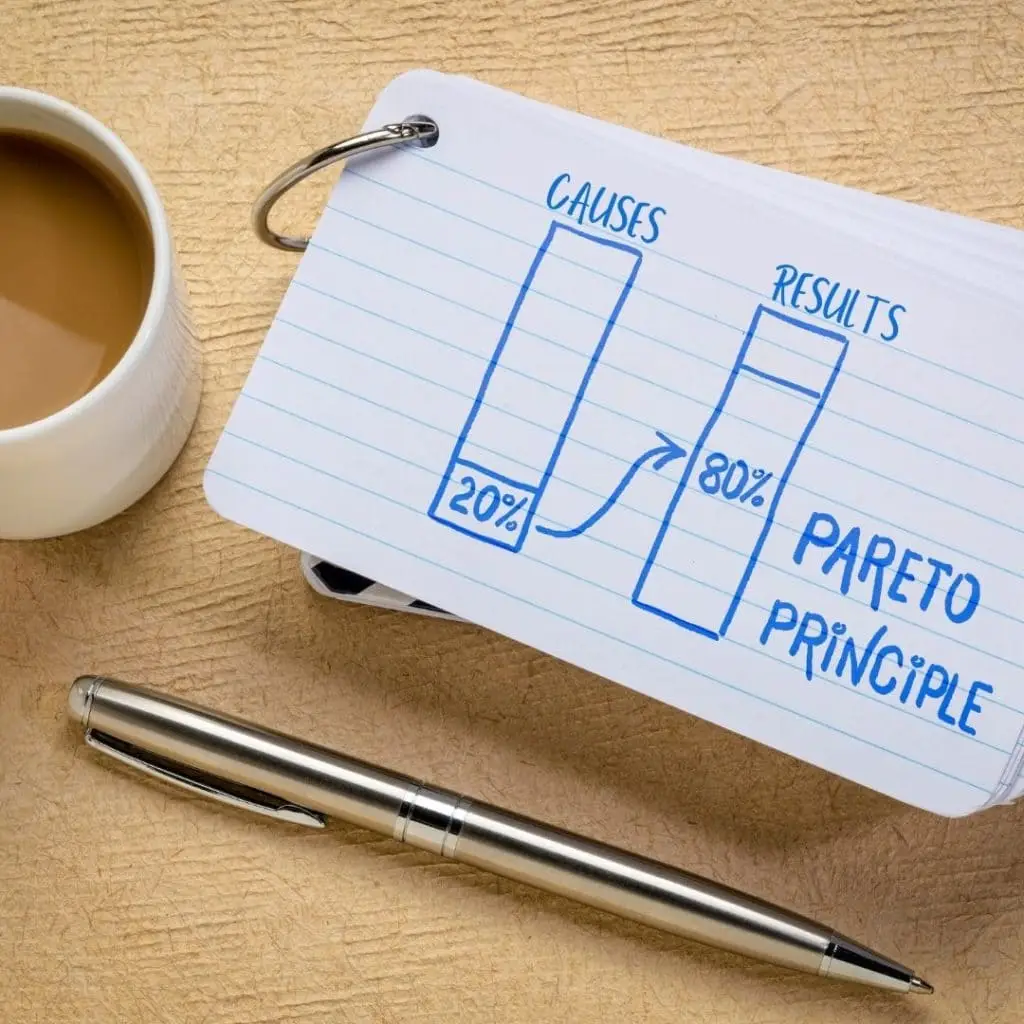Being a leader means juggling countless projects, strategically allocating teams and resources, and working to achieve exponentially better performance over time. It’s exhausting–almost by definition. We get that. And we want to help.
That’s why we developed processes that will help you choose the right projects for your team. This strategy ensures your team works on the focused, high-impact projects that will produce tangible positive results.
Remember: Projects can be an opportunity to improve your bottom line, customer satisfaction, and reputation or a black hole that draws in time and energy without giving anything back. Let’s make sure your team only works on the former. Let’s enhance your project selection strategy.


How Pareto Can Help
The best way to do that is to first focus on highly visible projects. These projects will be those that are clearly a problem in your department or at your plant; for example, prohibitively high scrap rates, a serious reliability issue, or recurring customer complaints. Clearly, the root cause for these problems should be immediately identified and a corrective action deployed.
However, once you’ve dealt with many of these highly visible problems, you may find yourself unsure as to what projects would have the highest impact moving forward. You could choose from a variety of smaller problems, but it’s unclear which is most beneficial. You might also remember the Pareto Principle, which states that 80% of results come from 20% of causes, and worry that if you don’t choose the right project, you won’t see optimal KPI improvements. That’s where having a robust project selection strategy comes into play.
At this point, consider the following in choosing your team’s projects:
- MULTIPLE METRICS | If a traditional Pareto analysis fails to identify high-value projects, those opportunities are being hidden by the structure of the data. By analyzing data across multiple metrics and revealing like events, your opportunities become clear. For example, it might appear you have several small problems in many department areas. However, when the varying metrics for each smaller problem are analyzed together, you are likely to find an underlying opportunity across all events. To employ this method, combine your portfolio of projects for each area (warranty, cost, customer late delivery, etc.), find the overlap, and focus on that to improve several KPIs.
- METRIC ACCURACY | Another potential stumbling block during project selection is metric accuracy. When measurements aren’t accurate or reliable, it’s unlikely you’ll have the information necessary to make the optimal decision during project selection. So before you select a new project, have your team prove that the metrics you’re using to make your decision are valid–including that they are not skewed by anomalies. This will ensure you focus on chronic, serious problems that will yield substantial results.
- NEW OPPORTUNITIES | Not only is it important to pursue projects that will mitigate problems for short-term gain, it’s also essential to choose those projects that will provide long-term opportunities. For example, if you solved that tooling problem that you’ve been working around, would you be able to launch a new product? Acquire a new customer? Instead of thinking in band-aid solutions and focusing on bailing the water out of your boat, could a well-selected project allow you to identify and plug the leak so your crew can traverse new waters?
By moving from projects that address highly-visible issues to those that solve like-event problems or offer new opportunities, you’ll be poised to easily boost your KPIs and improve customer satisfaction. No juggling involved.
Have a good project selection strategy but still need better ROI?
Take this quiz to find out where else your problem may lie.




